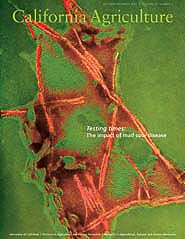All Issues

Testing times: The impact of mad cow disease
Cover:
This colored transmission electron micrograph (TEM) reveals prion fibrils in the brain of a cow infected with BSE (bovine spongiform encephalopathy) or mad cow disease. The elongated orange fibrils are believed to be aggregations of the abnormal prion protein, which is the disease agent. Although it has only been confirmed in two U.S. cows, BSE has caused policy and regulatory ripple effects involving producers, processors and consumers both here and abroad.
Photo: EM Unit, Veterinary Laboratories Agency/Science Photo Library
October-December 2005
Volume 59, Number 4
Volume 59, Number 4





